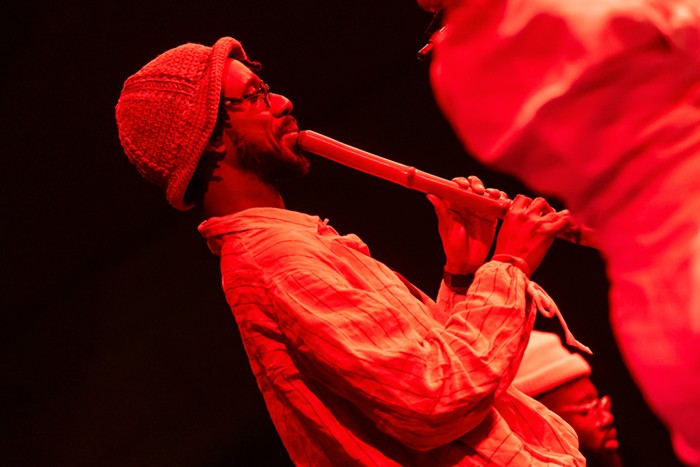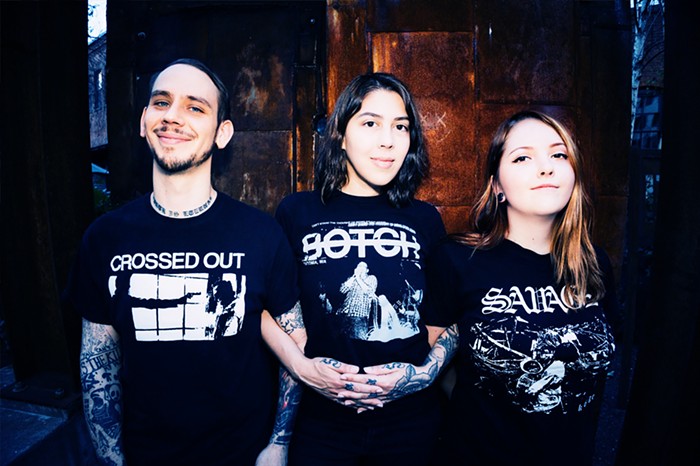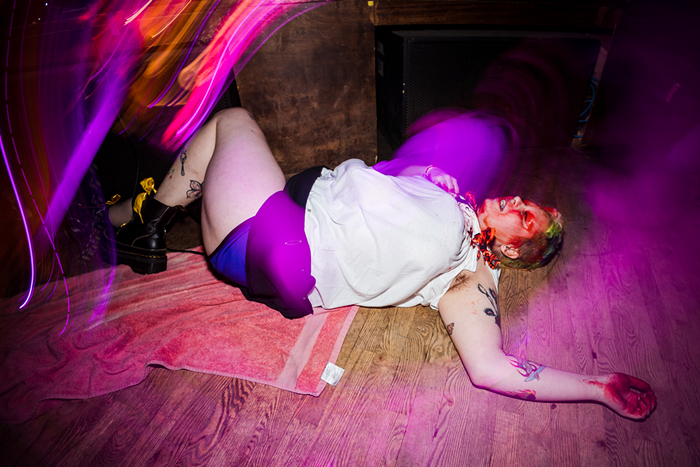Bang, bang, bang, bang. Inside the darkened Moore Theatre on May 23, veteran Seattle Police Department SWAT officer Jeff Geoghagan was taking out victims with a finger gun. Three more: bang, bang, bang. Geoghagan lowered his arm. "It happens pretty quick, doesn't it?" he asked the crowd in the auditorium. Before he started "shooting," Geoghagan asked the audience to time him. The seven shots took less than 30 seconds. The lesson: The cops won't make it in time to help you.
Geoghagan's presentation—Safety in the Arts: Active Shooter Training—was designed to teach arts-organization staffers what to do if a gunman opens fire in their theater, cinema, or music venue. (Geoghagan has been involved in several officer-involved shootings, including the high-profile killing of Joel Reuter, a mentally ill man on Capitol Hill.)
Geoghagan has given this presentation plenty of times before. But this was the first time in recent years that it's been targeted specifically at people who work at arts venues, according to the city's Office of Arts & Culture. Spokesperson Erika Lindsay said the training came about when Seattle Theatre Group executive director Josh LaBelle learned at a national conference that other cities offer theaters training on what to do in an active-shooter situation. Seattle's SWAT team generally offers the training to "schools and high-risk offices (Jewish Federation, CAIR Washington, etc.)," Lindsay said in an e-mail.
Recent attacks have made it clear that arts organizations are also at risk. About 200 people attended two sessions of Geoghagan's training, including staff from Seattle Opera, Town Hall, EMP Museum, Holocaust Center for Humanity, and more than 50 other arts organizations.
"YOYO time," one of Geoghagan's PowerPoint slides read: "You're On Your Own."
Most of Geoghagan's advice is boilerplate: Be observant of your surroundings, learn basic first aid, take notice of coworkers who display repeated warning signs of potential violence, and if a shooting starts, try to get away, hide, or fight. But in a crowded venue like a theater or arena, he said, running and hiding aren't really going to work.
"What do we do with our audiences?" someone asked during the question-and-answer period.
"If the person is actually here, sitting in the seat and stands up [and starts shooting]... I suggest you fight," he told the room. "Whoever is closest to that person—patron, usher, staff, performer—fights. I'm gonna tell you right now, there are no means of protection right here. This person is in the theater armed with a firearm and they're shooting people—you need to fight. That is the best chance you have of minimizing the loss of life, period. I wish I could give you a different answer, but practicalities are such that that's the best answer I can give you."
An audience member who works with youth at a museum asked what he should do if he leads the kids out of the building but doesn't have everyone he's responsible for. "Do I go back in?" he asked.
"First of all, that's a personal decision," Geoghagan said. "You are talking about placing yourself at your own personal risk to go back inside. Your organization cannot tell you that you have to place yourself in peril for that purpose."
Geoghagan reasons that the kids left inside may have found a safe hiding place or another way to escape, so it's not a good idea to go back in. But, "if you're looking inside and you're seeing a child frozen in fear and perpetrator/suspect/violator/active shooter going toward that person and you choose to do so," he says, "that's on you and that's very admirable."
After Geoghagan's presentation, Thomas Gilmore, a soft-spoken security guard who works for a contractor at the Paramount, Neptune, and Moore Theatres, said he already knew most of what was in the presentation but that he and his coworkers have never had this kind of training. "A lot of our guys don't have the first idea of what to do," he said. "We haven't had this talk."
After the attacks in Paris, Gilmore said the contractor he works for began doing more bag searches at events ("Even at a Broadway show"). Gilmore said he'd feel a responsibility to fight an attacker if a shooting happened while he was working. A coworker standing nearby interjected, arguing it's up to police, not security, to deal with shooters: "It's not your job."
"I disagree strongly," Gilmore said. "Who else's job is it? It's not your job as a patron."
Erin McNamara, a stagehand with International Alliance of Theatrical Stage Employees Local 15, said she has long worried about school shootings but only recently—after Aurora and Paris—began to think more about the chances of a shooting in a theater.
"I had always thought of hiding," McNamara said. After the training, though, "I understand [fighting] does probably make more sense. If you have even three people that are trained to just try to take the person down, then you would reduce casualties rather than just hiding and hoping."
Is it empowering to have this kind of training, I asked her, or does it feel disempowering to give in to a reality of too many guns and too little political will to do much about it?
"It's empowering," she said, comparing it to knowing what to do in an earthquake. "I agree it is very sad that we are at this location in time that we have to think about these things," she added, "but it's what we have to think about."



















